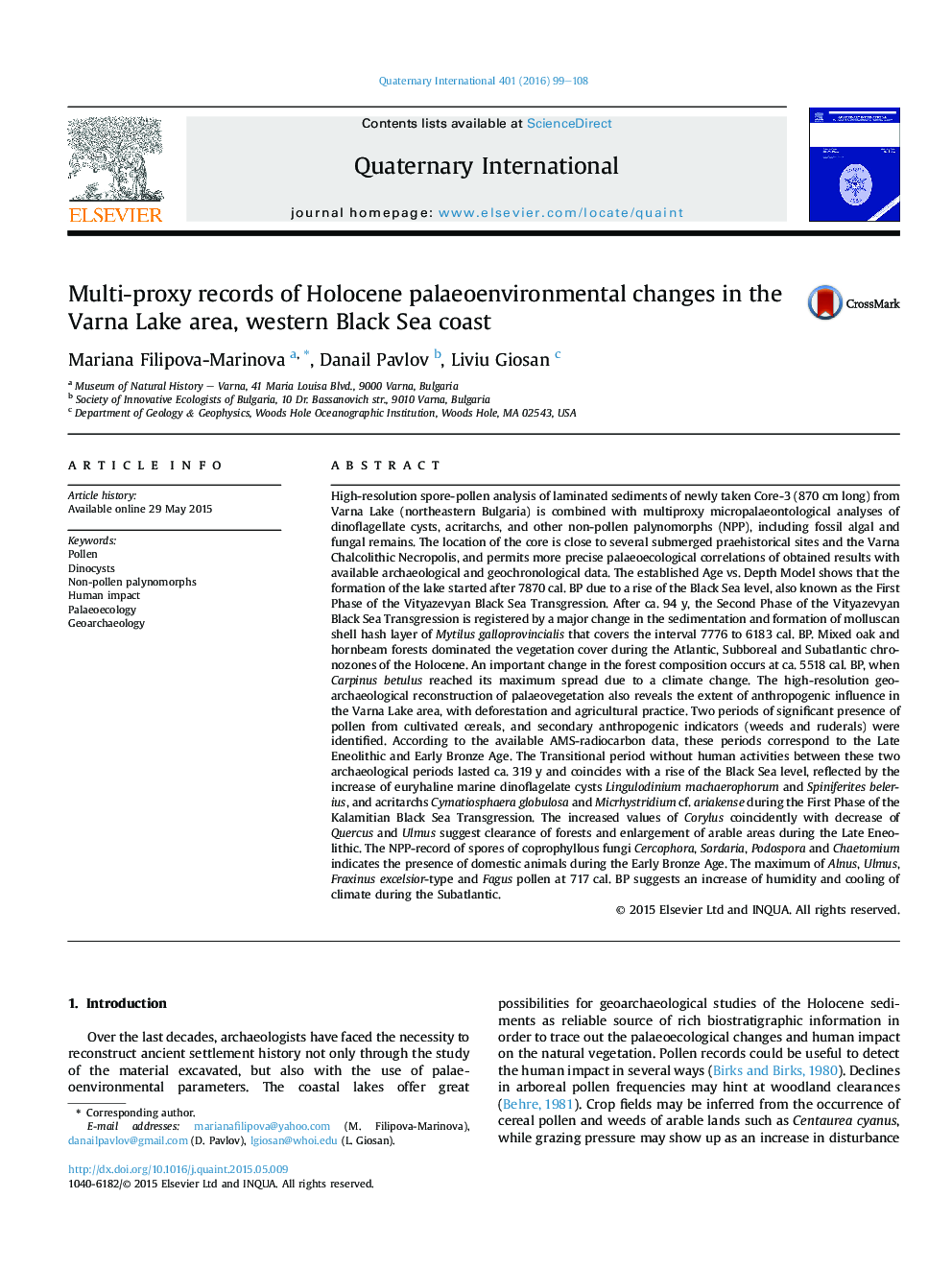| کد مقاله | کد نشریه | سال انتشار | مقاله انگلیسی | نسخه تمام متن |
|---|---|---|---|---|
| 1040176 | 1484097 | 2016 | 10 صفحه PDF | دانلود رایگان |
High-resolution spore-pollen analysis of laminated sediments of newly taken Core-3 (870 cm long) from Varna Lake (northeastern Bulgaria) is combined with multiproxy micropalaeontological analyses of dinoflagellate cysts, acritarchs, and other non-pollen palynomorphs (NPP), including fossil algal and fungal remains. The location of the core is close to several submerged praehistorical sites and the Varna Chalcolithic Necropolis, and permits more precise palaeoecological correlations of obtained results with available archaeological and geochronological data. The established Age vs. Depth Model shows that the formation of the lake started after 7870 cal. BP due to a rise of the Black Sea level, also known as the First Phase of the Vityazevyan Black Sea Transgression. After ca. 94 y, the Second Phase of the Vityazevyan Black Sea Transgression is registered by a major change in the sedimentation and formation of molluscan shell hash layer of Mytilus galloprovincialis that covers the interval 7776 to 6183 cal. BP. Mixed oak and hornbeam forests dominated the vegetation cover during the Atlantic, Subboreal and Subatlantic chronozones of the Holocene. An important change in the forest composition occurs at ca. 5518 cal. BP, when Carpinus betulus reached its maximum spread due to a climate change. The high-resolution geoarchaeological reconstruction of palaeovegetation also reveals the extent of anthropogenic influence in the Varna Lake area, with deforestation and agricultural practice. Two periods of significant presence of pollen from cultivated cereals, and secondary anthropogenic indicators (weeds and ruderals) were identified. According to the available AMS-radiocarbon data, these periods correspond to the Late Eneolithic and Early Bronze Age. The Transitional period without human activities between these two archaeological periods lasted ca. 319 y and coincides with a rise of the Black Sea level, reflected by the increase of euryhaline marine dinoflagelate cysts Lingulodinium machaerophorum and Spiniferites belerius, and acritarchs Cymatiosphaera globulosa and Micrhystridium cf. ariakense during the First Phase of the Kalamitian Black Sea Transgression. The increased values of Corylus coincidently with decrease of Quercus and Ulmus suggest clearance of forests and enlargement of arable areas during the Late Eneolithic. The NPP-record of spores of coprophyllous fungi Cercophora, Sordaria, Podospora and Chaetomium indicates the presence of domestic animals during the Early Bronze Age. The maximum of Alnus, Ulmus, Fraxinus excelsior-type and Fagus pollen at 717 cal. BP suggests an increase of humidity and cooling of climate during the Subatlantic.
Journal: Quaternary International - Volume 401, 16 May 2016, Pages 99–108
